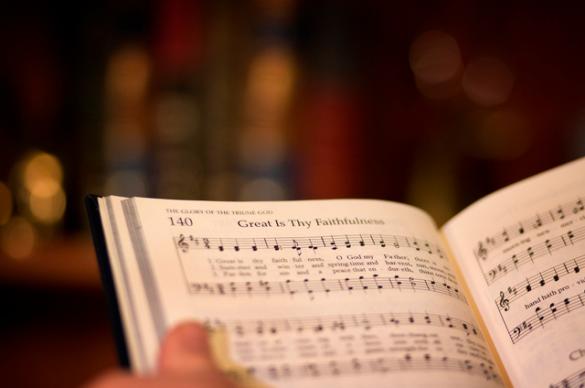A cutting-edge hymnal? Seems like a contradiction in terms. But General Conference could make it happen.
SAM HODGES
United Methodist News Service
If the 2016 General Conference approves, The United Methodist Church will start on a five-year path toward a new hymnal that is Internet cloud-based and printed on demand, with each congregation able to customize its selections, beyond a core group of hymns.
It will work for those who want a book for the faithful to hold and those who want to download and project onto screens praise and worship songs that reflect Wesleyan theology.
“The new United Methodist hymnal will blaze a new path for what a hymnal is,” said the Rev. Taylor Burton–Edwards, director of worship resources for United Methodist Discipleship Ministries. “No longer a static collection limited by the size of a pew rack or one set of decisions about ritual resources and congregational song every 20 or 30 years, the new hymnal project will be an ever-expanding suite of resources fit for an ever-diversifying world.”
Discipleship Ministries and The United Methodist Publishing House share responsibility for the denomination’s hymnal. They are asking delegates to General Conference 2016 – set for May 10-20 in Portland, Oregon – for permission to take the first big steps toward a new version.
That means creation of a 15-member Hymnal Revision Committee, which is standard procedure. But the agencies also are asking for a standing nine-member Hymnal Advisory Committee to recommend additions to the hymnal to future General Conferences. The cloud-based, print-on-demand approach makes an expanded hymnal possible.
The 2020 General Conference would need to approve the Hymnal Advisory Committee’s recommendations, with release of the new hymnal coming as early as 2021.
The United Methodist Publishing House is responsible for production and sales, and officials there said it is too early to predict pricing for the new hymnal, or the expense of creating it.
“We are confident that UMPH, which receives no general church funding, will craft a plan so that the sales of affordable electronic and print formats of the next hymnal will cover all the costs – just as we’ve done in the past,” said the Rev. Brian Milford, current book editor and chief content officer, and designated president/CEO.
Pent-up demand
The United Methodist Hymnal currently in use debuted in 1989. Nearly 6 million copies have been distributed. Though many churches now feature praise bands and lyrics projected on screens, the hymnal still sells some 25,000 copies a year.
The 2008 General Conference approved creation of a Hymnal Revision Committee, but the recession intervened and the agencies backed away from bringing out a new hymnal.
“There was great uncertainty about managing the financial viability of the project in a tumultuous economic climate,” Milford said.
Milford added that a study of the market, combined with anecdotal reports, suggests the timing is right.
“The big `why’ in all of this is that people are asking for it,” said Burton-Edwards.
The new hymnal is to have a core of a few hundred hymns and other worship resources that the Hymnal Revision Committee recommends to General Conference as essential for United Methodist worship and identity. But hymnal purchasers could also select from a much larger selection of supplemental resources, also approved by General Conference, and use them in book or digital formats.
Burton-Edwards said many churches now use Christian Copyright Licensing International (CCLI), particularly its SongSelect service, for acquiring lyrics and music for contemporary worship songs. But United Methodist churches don’t have a one-stop place to go to for music consistent with Wesleyan theology.
The new hymnal would correct that, with the Hymnal Advisory Committee recommending more materials for approval to each new General Conference.
“The key to a denominational hymnal is vetting,” Burton-Edwards said. “We’re making a selection of resources, out of the vast possible selection, that we’re saying represent us as United Methodists. They speak our theology. They sing our theology. They reflect our commitments to personal and social holiness.”
Possible digital divide
The United Methodist Church has thousands of small churches, many with limited technological resources, which could challenge access to the full resources of a new hymnal.
The Rev. Joe Stobaugh, executive minister of worship and arts at Grace Avenue United Methodist Church in Frisco, Texas, and immediate past president of The Fellowship of United Methodists in Music and Worship Arts, strongly supports the new hymnal. But he sees the potential for a digital divide.
“The key is going to be making the cloud part of it very accessible and easy to use,” he said.
Another potential concern of General Conference delegates is the focus on the U.S. market.
Milford said the use and sale of copyrighted music is often granted only for specific countries, and commercial regulations can restrict international distribution. He noted “challenges with respect to cultural fit and worship styles,” and even practical concerns such as altered page formatting due to language differences.
“But we are working diligently to resolve as many constraints and make the next hymnal as widely available as possible,” he said.
Last Updated on November 10, 2023

